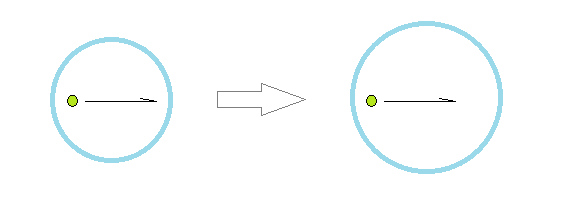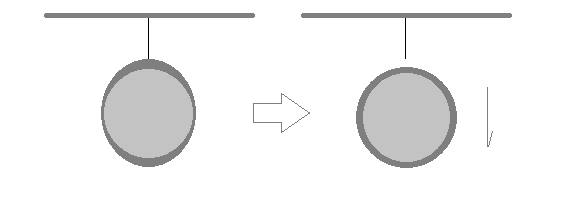Having presented a theory of physics based on the idea that everything can be explained by three types of particles that act inside a framework of time, space and energy, it is now possible to come to some conclusions about the nature of all these factors, and how they relate to each other.
In this book we will be more precise in our definitions of things, and we will see that it is in fact impossible to describe anything in absolute terms. Everything we experience and everything we measure is relative to something else.
However, before we rush into an explanation about the relationships between things, let us first start by being a little more precise about things. Let us start with the basic premise of the Velcro model.
In the Velcro model we have three types of particles that we call quanta. They are either negative, in which case they are covered with hoops, or they are positive, in which case they are covered with hooks, or they are neutral, in which case they are a mix of hooks and hoops.
The positive and negative quanta are so reactive that they do not exist freely in nature. The simplest negative particle found in nature is the electron which consists of two negative quanta and one positive quantum. That gives the electron a net charge of minus one.
The electron is a bloated structure. It is much larger than its three constituent quanta, and the way we explain this in is that the electron and all other particles with inertia are hollow.
Since the Velcro model equates energy of particles with their size, bloated structures carry a lot of energy.
The smallest neutral particle that exists in nature is the neutrino. It is the neutral quantum described above. It is a mix of hoops and hooks. However, the neutrino is not always completely neutral. If it hits a hook covered surface, its hoops are drawn out, making it slightly negative. If it hits a hoop covered surface, its hooks are drawn out, making it slightly positive.
Neutrinos that find their way into the hollow inside of an electron thus become slightly positively charged. This produces a tiny bit of pressure inside the electron, which in turn explains the electron's bloated nature.
Protons are bloated mega-structures. Relative to electrons, they are giants. However, protons are identical to electrons in the way they are put together. They are hollow, and they have charged neutrinos inside of them, producing pressure.
The neutron is not a single mega-structure, but the sum of a proton and an electron, tied together by a neutrino. This explains why the neutron retains its pressure and size, despite being neutrally charged on average. It also explains why free neutrons decay within minutes. Neutrons are not atomic. They fall apart when not in a stable association with a proton.
An atomic nucleus is an assembly of one or more protons, glued together by electrons and neutrinos.
All normal matter that we see around us are made up of atoms which consists of an atomic nucleus together with electrons that bounce up and down on the nucleus, neither gaining nor loosing energy as they find themselves trapped by the electric force.
In addition to the neutrino and the various kinds of normal matter, there is the photon. It is an assembly of six quanta, three positive and three negative.
Unlike normal matter, it is not bloated. It is not hollow, but solid and elastic. There are no neutrinos inside photons, but because they are elastic, they can expand somewhat. This makes the photon a better energy vessel than the neutrino. However, it is nowhere near as good at storing energy as inertial matter.
What the photon does well, is the communication of energy. Since it moves at the speed of light, it can move energy from one place to another in an instance.
The neutrino and the photon travel at the speed of light. They travel neither faster nor slower than this. However, since the neutrino is smaller than the photon, it zips past obstacles, such as other photons, in a slightly more direct path than the photon. The neutrino will therefore always arrive quicker at a destination than a photon, provided the space between the point of departure and point of arrival is filled with zero-point particles assumed to exist in the Velcro model.
From this, we will see that concepts like time and space can be explained. Also, the very existence of things in the universe can be explained by this model.



















